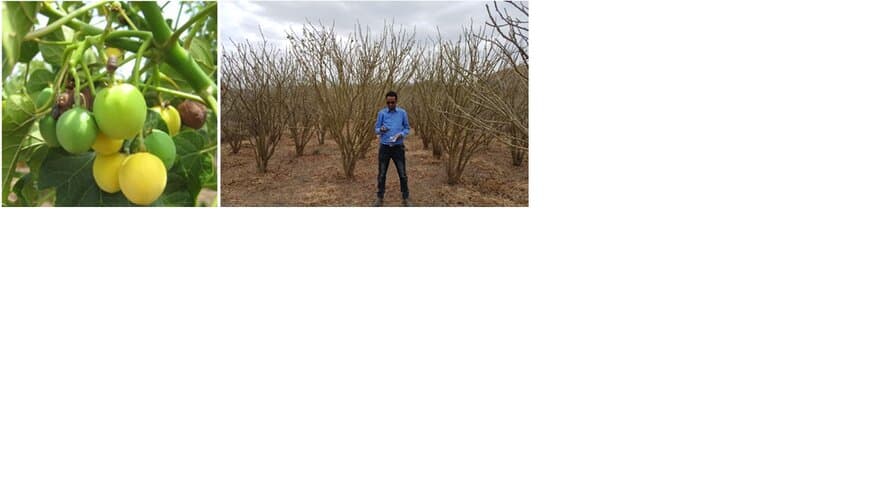The PhD work of Gebresilassie Asnake Ewunie focuses on investigating and characterizing the biofuel production potential of J. curcas oil and various residues.
Utilizing the oil and various residues can improve the overall biofuel production potential of Jatropha curcas L
Energy production and utilization using fossil fuel resources have been identified as the main factors threatening the global environment. Sustainable energy production from nonrenewable sources is also becoming impractical as the natural reservations of petroleum products are depleting at an alarming rate. In Ethiopia, more than 92% of domestic energy consumption is obtained from the direct burning of traditional biomass, which resulted in severe environmental degradation, indoor air pollution, and GHG emissions. The entire transport fuel consumption of Ethiopia is also dependent on imported oil that consumed more than 50% of the total export income (consumed more than 2.4 billion US dollars per year). As a result, substituting the conventional fossil fuel and traditional biomass energy resources with value-added and locally available bioresources would be the appropriate measures to mitigate all the above challenges. Among various forms of renewable energies, biodiesel and biogas production from Jatropha curcas L (J. curcas) oil and different residue could be an alternative energy resource that can potentially replace petroleum oils and traditional biomass combustion.
The present thesis focused on investigating and characterizing the biofuel production potential of J. curcas oil and various residues. Biofuel in the present study encompasses the biodiesel produced from J. curcas oil and biogas produced from residues generated during seed processing, oil extraction, and biodiesel production processes. Factors affecting the cultivation of J. curcas for sustainable biodiesel production are identified and characterized. Furthermore, a specific study was conducted to investigate the potential and suitability of Ethiopian variety J. curcas for biodiesel production. The yield and physicochemical properties of J. curcas oil grown in various study areas of Ethiopia were characterized, and their potential and suitability for biodiesel production were examined. Major J. curcas residues have been identified, and their potential for biogas production has been characterized. Various pretreatment techniques such as mechanical, steam explosion, and alkaline pretreatment methods were designed and employed to enhance the degradation and methane production potential of different J. curcas residues. The effect of various pretreatment conditions such as incubation temperature, retention time, alkaline concentration, organic loading, and particle size on the methane yield of J. curcas residues was investigated and modeled using a response surface methodology combined with a central composite design (RSM-CCD).
The result shows the yield and various physicochemical property of J. curcas oil varies among studied areas. Ethiopian variety J. curcas shows higher oil content. The saturated and unsaturated fatty acids, iodine, and saponification values are in the range recommended for biodiesel production; however, most sampled oils showed more than 1% FFA and higher peroxide values. The fuel properties predicted from the fatty acid composition of J. curcas oil agreed with international standards. At the optimum pretreatment conditions, alkaline and steam explosion pretreatments have improved the methane yield of J. curcas press cake by 40% and 34%, respectively. Likewise, the mechanical, steam explosion, and alkaline pretreatments have enhanced the methane yield of J. curcas fruit shell by 74%, 55%, and 44 %, respectively, as compared to the untreated samples. In conclusion, Ethiopian variety J. curcas oil shows good physicochemical properties for biodiesel production, while utilizing the oil and various residues can improve the overall biofuel production potential of J. curcas.
We believe that the current research work has provided at least three problems that have not been studied in the previous studies on J. curcas value chains and contributed new information to the academic discipline.
- Mapping of potential sites that are growing curcas with higher oil content and good physicochemical properties
- Improving the methane potential of various curcas residues through pretreatment at the optimum conditions
- Enhancing the biofuel production potential of curcas by utilizing both the oil and various residues
